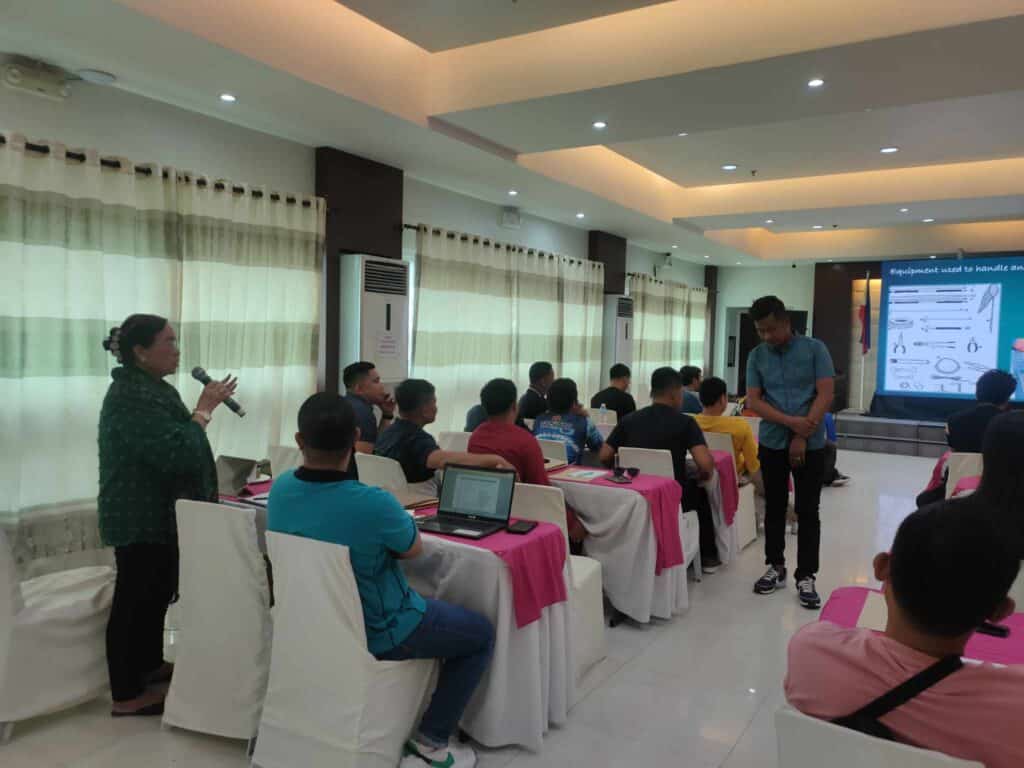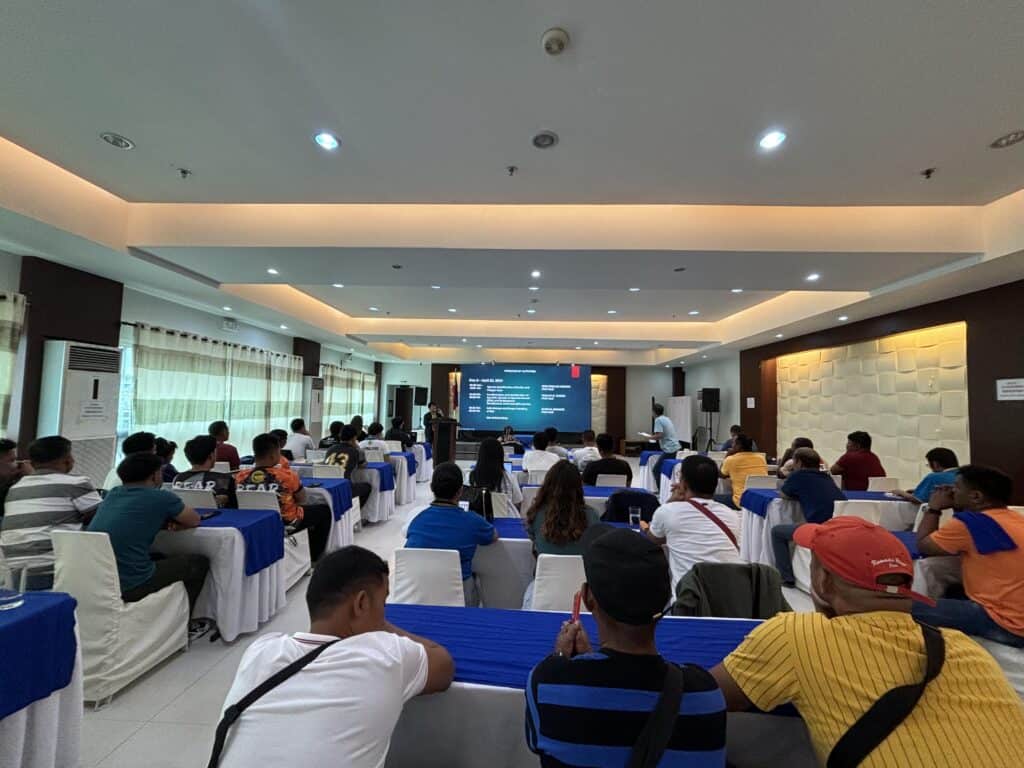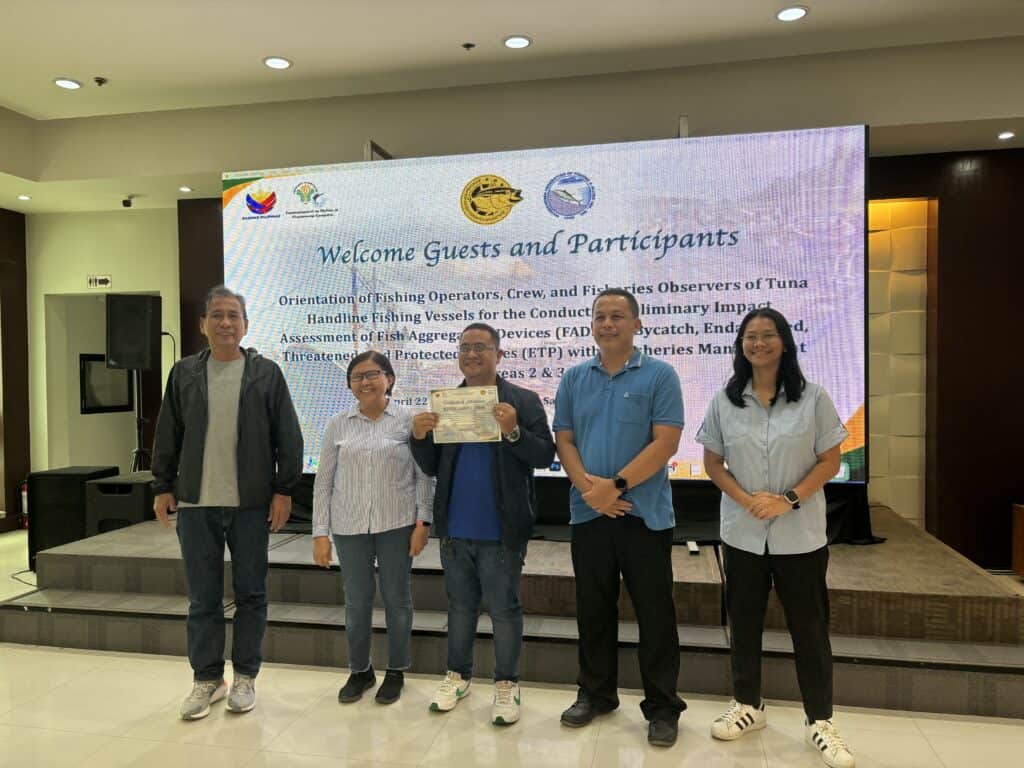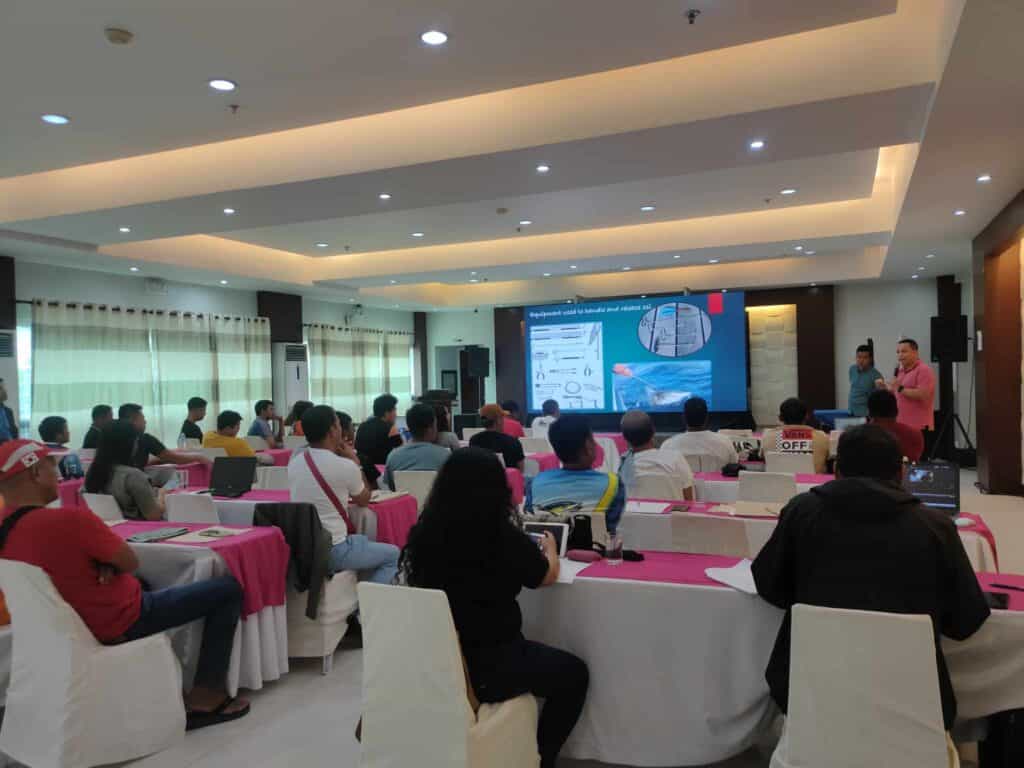A comprehensive 3-day orientation was conducted for fishing operators, crew members, and fisheries observers involved in tuna handline vessels. The primary objective of this orientation was to initiate the preliminary impact assessment of fish aggregating devices (FADs) on various aspects including bycatch, endangered and threatened species, and protected species (ETP) within fisheries management areas 2 and 3.
The orientation commenced with an introduction to the project’s rationale and objectives, providing attendees with a clear understanding of the purpose behind the assessment. Additionally, the methodology of the project was outlined, along with the presentation of handline forms to be utilized throughout the process.
Key components of the orientation included detailed sessions on species identification, encompassing both neritic and pelagic tuna, as well as a focus on familiarization and identification of bycatch. Special emphasis was placed on species of special interest (SSIs) and ETP species, ensuring participants were equipped to recognize and handle them appropriately. Techniques for the safe release and proper handling of SSIs, including the use of dehooking tools, were thoroughly discussed and demonstrated.
Towards the conclusion of the orientation, a review of the memorandum of agreement (MOA) was undertaken to ensure all parties were aligned with the agreed-upon terms and conditions. Furthermore, fisheries observers were formally endorsed to fishing operators, establishing clear lines of communication and responsibility within the framework of the assessment.
The culmination of the program involved the presentation of certificates to participants, acknowledging their active involvement and commitment to the objectives of the orientation. This not only recognized their efforts but also served as a testament to their readiness to contribute effectively to the ongoing assessment.
In essence, the orientation served as a foundational step in the larger endeavor to assess the impact of FADs on various aspects of tuna fisheries. By equipping stakeholders with the necessary knowledge and tools, it laid the groundwork for informed decision-making and sustainable management practices within the fishing industry.

























